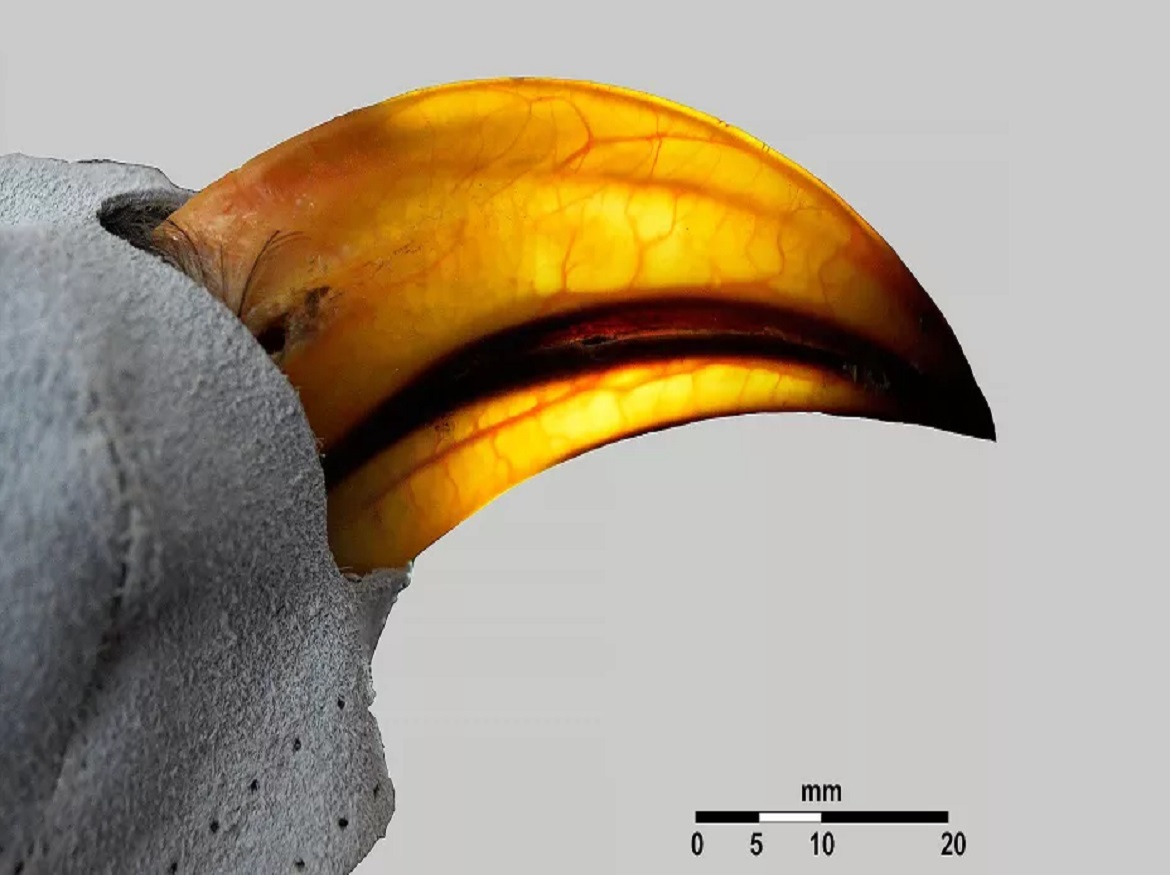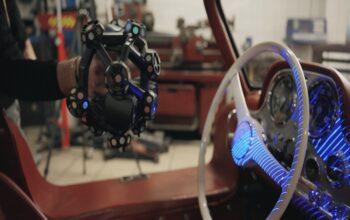Challenge: Researchers in Australia have been studying multiple species of birds in order to measure how their bodies have changed over the past century in response to global warming. They needed a fast, accurate, and convenient way to document the precise dimensions of thousands of beaks of 86 different species of birds held in various museum collections.
Solution: Artec Space Spider, Artec Studio
Results: By using the handheld 3D scanner Artec Space Spider, each bird can be scanned in submillimeter color 3D in approximately two minutes. This makes it easy to scan anywhere from 30-50 birds in one museum visit. Scan processing takes just under six minutes for each bird. The resulting scan data has made it possible for researchers to show that over the past century, the beaks of the birds being studied have grown approximately 4% to 10% larger.

PhD candidate Sara Ryding 3D scanning an Australian galah (Eolophus roseicapilla) with Artec Space Spider (image credit: Sara Ryding)
One of the most startling impacts of global warming has taken place for decades now: multiple species of birds around the world have been reacting to rising temperatures by “shape-shifting,” changing their beaks, legs, and other appendages, in a desperate struggle to adapt and survive.
How this helps them cope with the heat is explained via a little-known observation called “Allen’s rule.” Brought to life in the 19th century, this biological rule states that animals in warmer climates, in general, have larger appendages, such as their ears, beaks, tails, and limbs.
Because many appendages are not insulated by fur or feathers, these anatomical structures act as a kind of thermal radiator, to dissipate heat and cool down the animal to a more comfortable level.
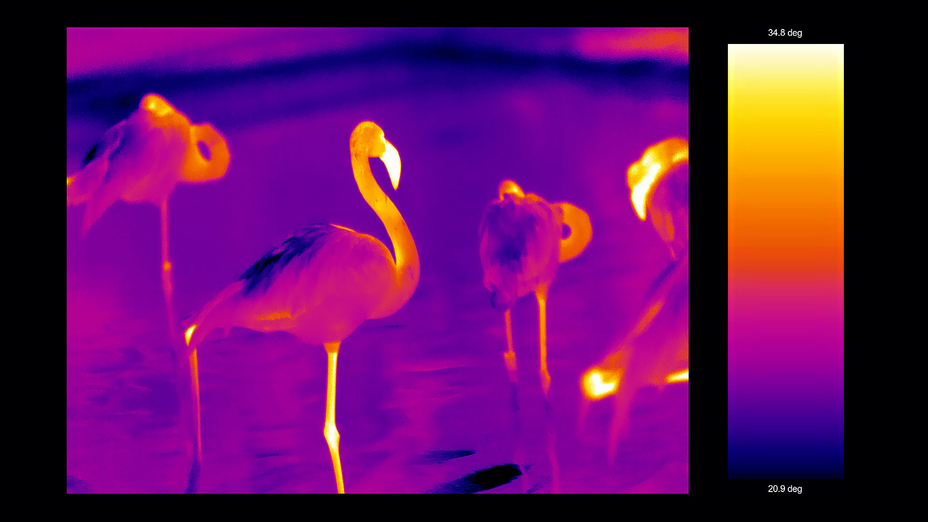
Infrared image showing flamingos radiating heat through their beaks and legs (image credit: Glenn Tattersall)
African elephants accomplish this with their ears; mice, through their tails; and birds, via their beaks and legs.
How birds adjust their body temperature
If we take a closer look at how nature has equipped birds to achieve this impressive thermoregulatory feat, we can see why this strategy is so effective. First of all, let’s consider one of the most effective parts of a bird’s bodily thermostat: its beak. Until you look more closely, you might imagine that birds’ beaks are composed of dead, inert material, like bark on a tree.

The high degree of vascularity of the beak of a female Southern Yellow-billed Hornbill (Tockus leucomelas) from the Kalahari Desert, South Africa (image credit: T. van de Ven, UCT)
Rather, they’re living organs, exceedingly-vascularized, rich with a branching network of blood vessels. To offer a vivid example of this, when it’s time to go to sleep and a bird needs to cool down, she can flood her beak with additional blood, thereby dispersing excess body heat, thus bringing her core temperature down to a more restful level.
Obviously, birds with comparatively larger beaks relative to their body size accomplish this feat more effectively than do their more diminutively-beaked cousins.
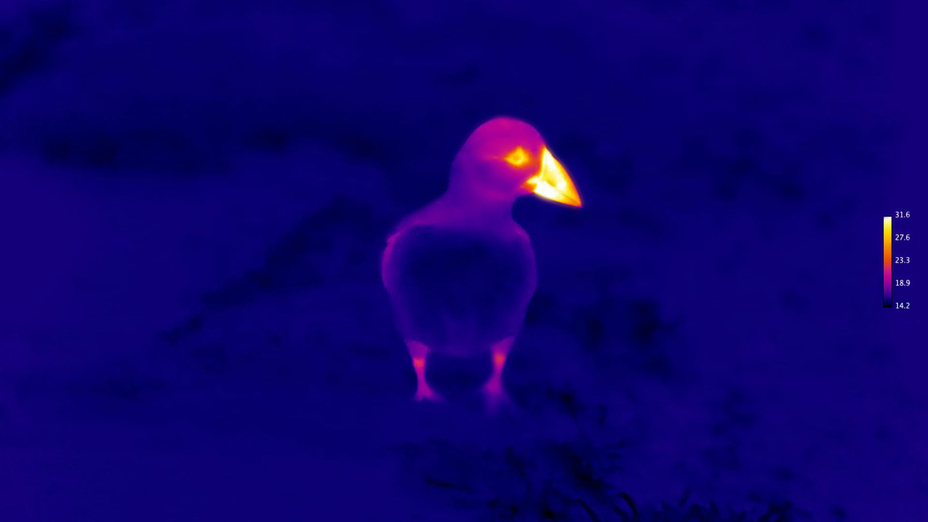
Infrared photograph of an Atlantic puffin (Fratercula arctica) showing heat dissipation in action (image credit: Glenn Tattersall)
On a broad scale, in response to accelerating temperatures, from generation to generation, animals may increase one or more of these same appendages in proportion to their body size. Because such changes affect the general symmetry of their bodies, the process is referred to as shape-shifting.
The ins and outs of avian shape-shifting
When it comes to birds, these anatomical transformations are minute, and must be measured by examining bird specimens collected over the decades of the past century and now held in museums, in order to effectively quantify the degree of shape-shifting occurring.
Past research has focused on evidence of this evolutionary process taking place within individual species or certain groups of birds. But current research that illuminates this rapidly developing sector of avian biology encompasses nearly 6,000 birds representing 86 different species, spread across 10 orders of birds.
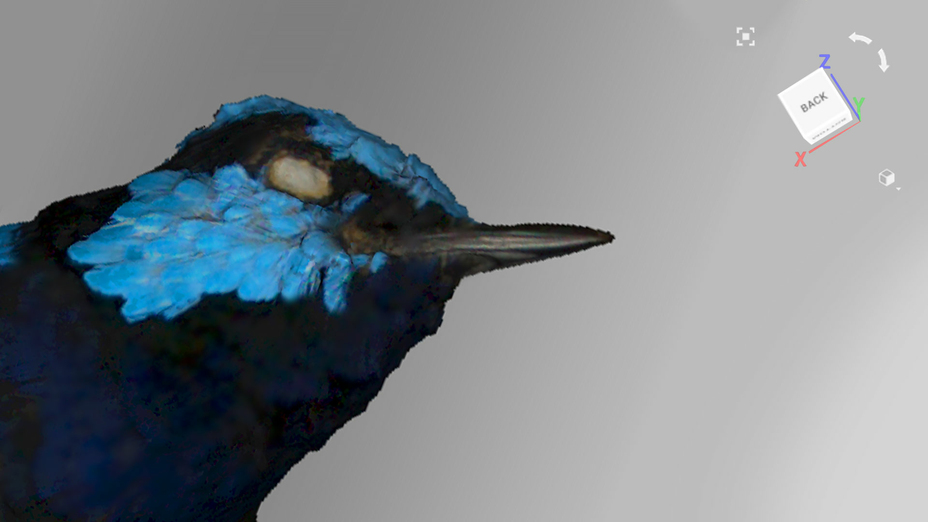
Artec Space Spider scan of an Australian superb fairywren (Malurus cyaneus) (image credit: Sara Ryding)
The research, led by PhD candidate Sara Ryding of Deakin University, in Melbourne, Australia, along with her colleagues, focuses on Australian bird species.
In order to obtain the highest level of accuracy when measuring the thousands of bird specimens required for this kind of study, Ryding’s supervisor, Dr. Matthew Symonds, decided upon 3D scanning as a solution.
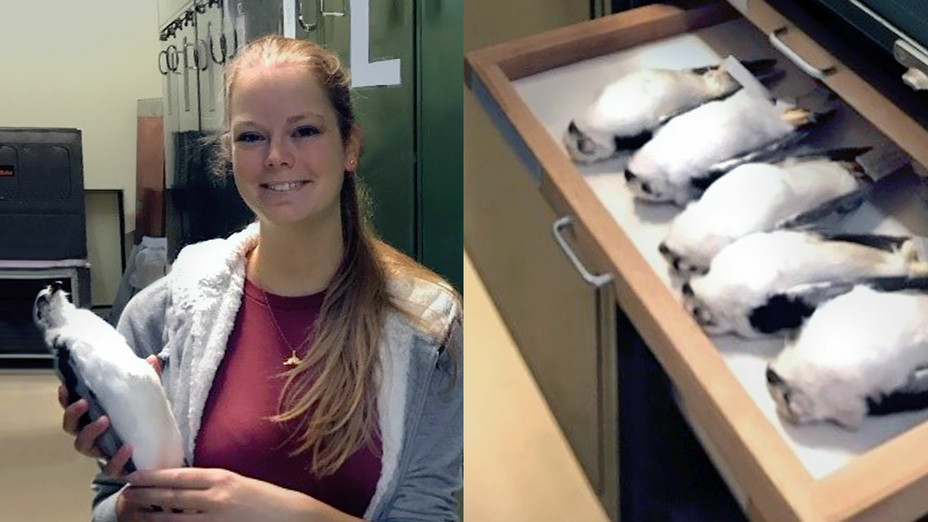
Researcher Sara Ryding holding an Australian black-shouldered kite (Elanus axillaris) (image credit: Sara Ryding)
After conducting careful research of all qualified 3D scanners on the market, Symonds contacted his local Artec partner Objective3D.
The company’s specialists introduced him to the Artec Space Spider, a metrology-grade, handheld 3D scanner that’s an established favorite among researchers and other professionals with stringent requirements for the utmost in accuracy and resolution.
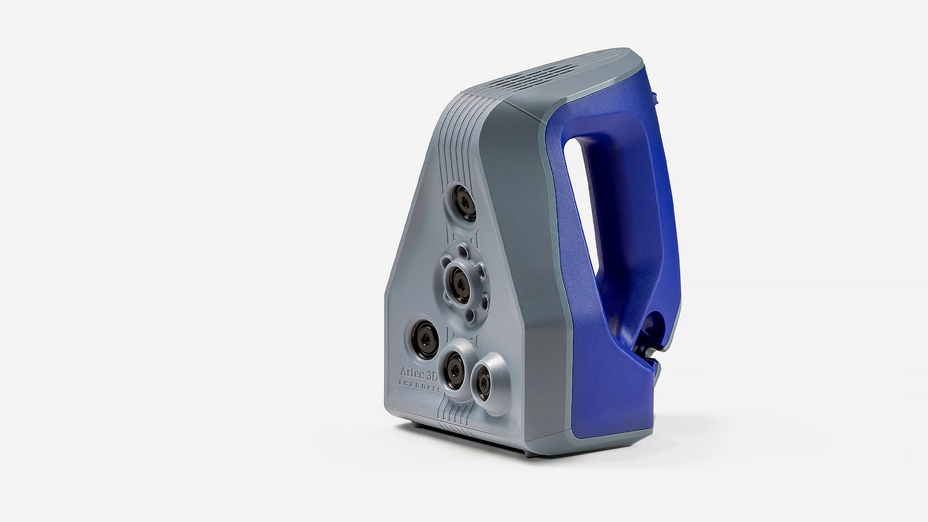
The Artec Space Spider
The traditional way of detecting shape-shifting in birds demands the use of digital calipers to calculate the length, width, and depth of bird beaks. From there, these dimensions are plugged into an equation that gives researchers the surface area of a cone of the same size.
Capturing unabridged 3D shape data with Space Spider
Commenting on the fact that bird beaks come in a wide variety of complex shapes, Ryding said, “By reducing the measurements of a beak down to a simple cone shape, you’re going to be losing some geometry there, and that means missing out on important anatomical surface data that should be recorded.”
She continued, “I am focusing on really different birds, from ducks to songbirds, as well as birds of prey…and when you’re studying such diverse species, you’re bound to see really different beak shapes. That’s why I think 3D scanning is much better for this kind of application, since you’re capturing all the organic surface anatomy, so nothing gets left out.”
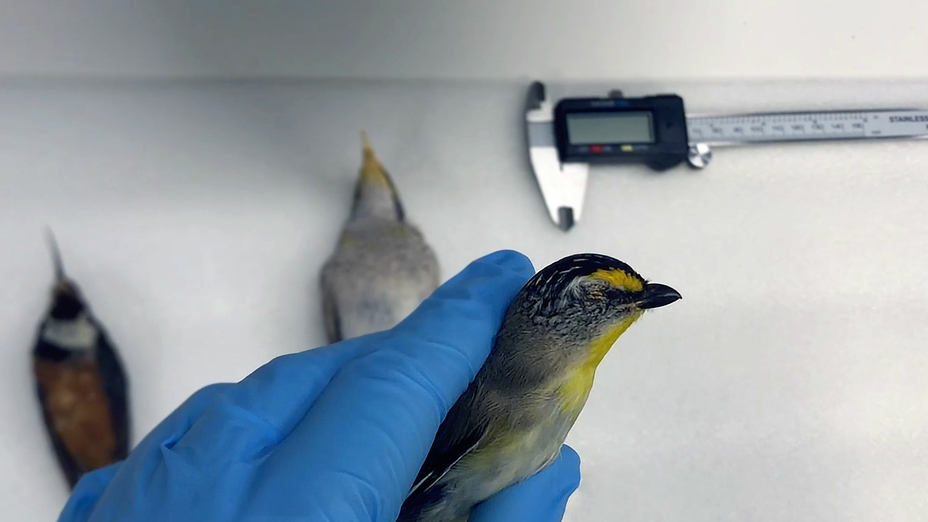
Preparing to measure an Australian striated pardalote’s beak with digital calipers (image credit: Sara Ryding)
One of the other difficulties of the manual measurement approach is that of operator error. Specifically, this means that the measurements taken can vary from researcher to researcher, due to slightly different caliper placement, resulting in significant enough variations to affect the results of the data, even with the best of intentions and experience.
Submillimeter measurements in seconds, scan after scan
In Ryding’s words, “With the Artec Space Spider, you can reduce operator error down to a bare minimum, since almost every scan is the same, from person to person. This is what every researcher is aiming for. The greater the accuracy of the dataset, the more clearly we can see correlations, which in turn help us reach our conclusions.”
So far, Symond’s research has shown that just over the past century, the beaks of the birds being studied have grown approximately 4% to 10% larger in size.
In terms of productivity, even with the COVID-19 lockdowns limiting her museum collection access to only sporadic visits, she still managed to scan more than 3,000 birds over the course of several months. Her ultimate target is 6,000 birds.
On her scanning days, Ryding goes into the museum with one or more particular species in mind. With the curator’s help, she finds the trays of these species, and begins searching for which ones to scan, depending upon the year the specimen was collected, where it was found, etc.
With smaller birds, she can scan about 40 or 50 in one afternoon. For larger birds, about 30 to 40 is a more realistic goal.

Artec Studio screenshot showing an Artec Space Spider scan of an Australian galah without texture applied (image credit: Sara Ryding)
Ryding’s scanning workflow is simple: she places the bird on a turntable, facing upwards, so it’s lying on its back. Then, while rotating the turntable slowly, she scans the bird with Space Spider, capturing all the essential beak anatomy in a single sweep. This takes about two minutes from start to finish, and results in a scan with a wealth of possibilities.
Reliable 3D data that eclipses manual measurements
In Ryding’s words, “Each scan gives me more than sufficient surface data for all of my analyses, and even enough for future research potentials, such as geometrical morphometrics. Thinking about the old way of doing this, there’s no way that a set of digital calipers could capture even a fraction of this highly-detailed surface data.”

Artec Studio screenshot showing an Artec Space Spider scan of an Australian galah with texture applied (image credit: Sara Ryding)
Ryding processes the scans in Artec Studio software, either back at home or at her university. All in all, from start to finish, it takes just about 6 minutes for each bird.
She went into detail about this step, “My scan processing workflow is as follows: I do a global registration, then outlier removal, followed by a sharp fusion, which keeps everything, even all the tiniest details, crystal clear. After that, I apply the texture, to make sure I can see where the feathers end and the beak begins. From that point, I cut out anything unnecessary, so only the beak is left in the scan.”

In Artec Studio, isolating the beak of an Australian galah for measurement (image credit: Sara Ryding)
Ryding then uses Artec Studio’s measurement tool to quickly obtain linear measurements of the beak, as a type of control check against the dimensions gauged via the digital calipers.
She explained her next step, “Then I do what digital calipers can’t do: a surface area measurement, which measures the entire area of the beak, not merely the linear aspects.”
“Space Spider captures every tiny sweep and curve of beak anatomy, which makes it possible to accurately determine the surface area of the beak, down below a millimeter.”
Elaborating further, Ryding said, “I take these measurements and use them as is, but if I were doing geometric or morphometric analyses, which I or another researcher could do with these Space Spider scans, I could simply export the models as PLY files and take them into various applications for accomplishing the necessary tasks.”

Artec Space Spider scan of a New Holland honeyeater (Phylidonyris novaehollandiae) (image credit: Sara Ryding)
In regards to broadening the scope of this research well beyond the borders of Australia, Ryding is hopeful that more researchers will add to the existing pool of data, making it possible to accurately quantify and compare the shape-shifting that’s taken place in various species of birds (or other animals) across regions, continents, and hemispheres.
The indispensable need for 3D scanning in biological research
In her opinion, 3D scanning is a must-have for reliably achieving that goal: “If we want to facilitate our studies, from researcher to researcher, having directly comparable, accurate data is imperative. Manual measurements are no longer sufficient.”
Ryding continued, “With Space Spider, in just a few minutes per bird, we’re capturing submillimeter surface data along with realistic texture details that together give us everything we need for our present and future work.”
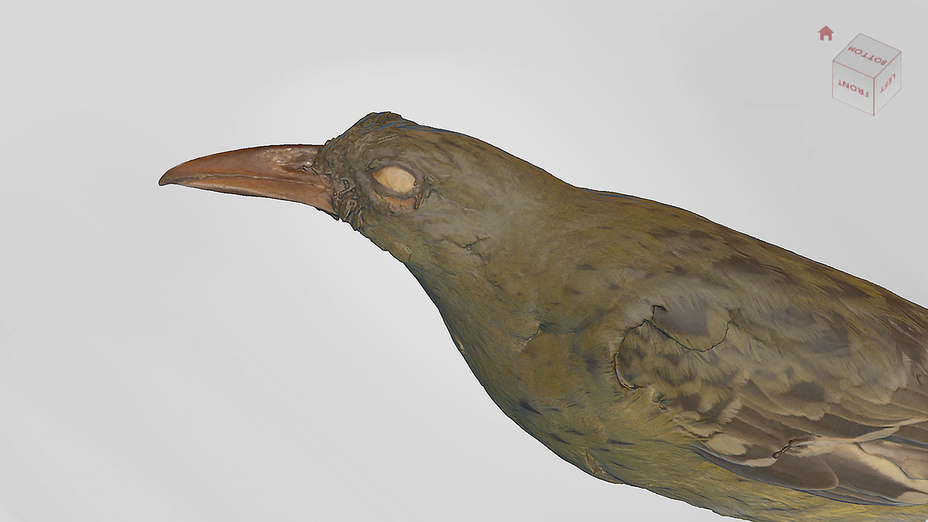
Artec Space Spider scan of an Australian green oriole (Oriolus flavocinctus) (image credit: Sara Ryding)
For researchers with no access to effective 3D scanners, Ryding and her team are improving the existing formula (using geometry) for estimating beak size in birds, by comparing formula estimates with accurate 3D model measurements created with Space Spider.
She accomplished this by identifying which of eight separate linear beak measurements are most important. Then, by using some of these measurements and comparing with 3D models of the same specimens, Ryding devised new formulas for improving manual estimates of beak size.
Ryding’s research is still ongoing in this direction, with plans for additional formulas and expanded coverage of a broader range of species.
Read More About Us @ https://metrologicallyspeaking.com/


